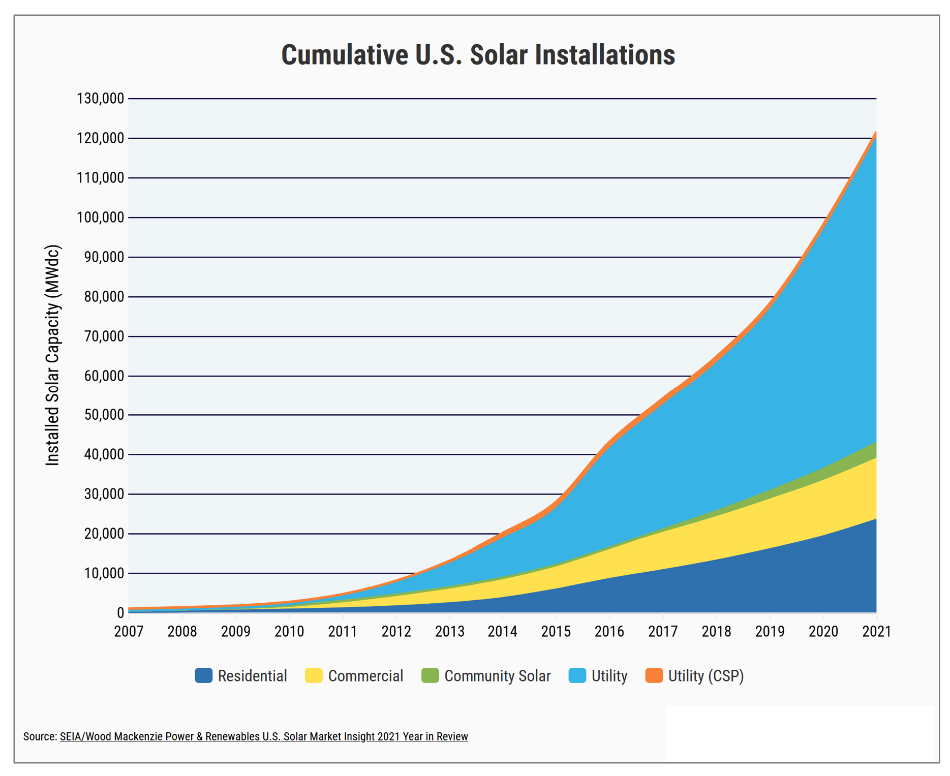One of the great things about solar panels is their durability.
Since solar energy is created entirely at the subatomic level, there are no moving parts which, of course, means virtually no wear and tear. As a result, your solar panels ought to give you 25-to-30 years of maintenance-free use before needing replacement.
Most manufacturers even include a 25-year performance warranty. Typically, they'll replace any solar panel whose efficiency degrades by more than 10% during its first 10 years or more than 20% for the next 15.
But, though 25 years is a long time, it's not forever, and every solar panel will eventually need to be disposed of.
Exponential growth
Fortunately, since the solar power boom is so new, at present the issue isn't very pressing.
The Solar Energy Industry Association (SEIA) estimates that, by the end of 2021, total US installed solar capacity had reached 121,000 megawatts. Whereas, in 2007, that number was only 470 megawatts.
That means 99.6 percent of the solar panels in use today are less than 15 years old and, hence, still have at least another decade till disposing of them even becomes an issue. 
Over the course of the next few decades, however, the number of solar panels that are past their 25-30-year shelf life will grow exponentially. So it's important that we have some way of recycling them pretty soon.
Solarcycle
Until recently, the only firm offering a comprehensive method of mass-recycling solar panels was in Europe. But it looks like the US is finally starting to catch up.
A Texas startup called "Solarcycle" has built a factory in Odessa to test a recycling process they've developed.
Solarcycle claims they're able to return 95 percent of the silicon, silver, copper, and other high-value or potentially hazardous metals found in solar panels back to the supply chain.
“There’s no real industrial-scale recycling process for solar. We came to the conclusion that we needed to develop one,” notes Solarcycle co-founder and CEO Suvi Sharma. “What inspired our investors is that we have a vision for a centralized gigafactory to process millions of panels. Nobody else is operating at that scale.”
Exponential growth
At present, Solarcycle only has the capacity to recycle 300,000 panels annually. But the firm is currently working on expanding that number.
Sharma says they'll be able to handle one million panels annually by the end of this year and several million more by the end of the next.
Solarcycle has even produced a helpful video showing exactly how they're recycling process works.
Solar power only became a viable way for homeowners to save money on energy during the last couple of decades.
Because solar panels have such a long shelf-life, that means we've yet to develop adequate recycling capacity. So, unfortunately, any panels that stop working today are overwhelmingly likely to wind up in a landfill.
But, as Solarcycle has shown, solar panels can be recycled.
The extraordinary growth of the solar industry means that the number of panels needing replacement is growing exponentially each year. And there's no doubt that, within another decade or two, there will be enough of a market to make solar panel recycling the norm.